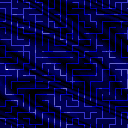
The start of the inhumation burials also began the practice of object burial with the dead. The Celts
belief in an afterlife was so strong that they would put off the payment of debts until they met on the
other side. So, the idea of burying objects that would be of help on the other side wasn't so unusual.
Swords, chariots, jewelry, and even wine flagons were sent on the journey with the deceased.
In the case of one female buried in Burgundy, she was buried with all of the pieces of the feast of her
funeral. In her grave were wine storage vessels, jugs, bowls, and cups, imported from various areas
of the civilized world. A good deal of jewelry also was included, including amber necklaces,
brooches, and a large gold necklace. In another grave, most likely of a doctor, three tools associated
with the profession were found-a probe, a retractor, and a trephining saw, which was used in brain
surgery.
Julius Caesar, who wasn't the most reliable of witnesses, said that at some burials, slaves and
favored retainers were burned with their masters.
With the development of archeology in the 19th century, the graves of many Celtic settlements
helped reveal how the Celts both lived, and died.
Inhumation Burial
Celtic Tribes|
TORCS|
Hillforts and Oppida
Boudicca and the Romans|
Druids||Social Classes
Terrifying Helmets|Arms And Weaponry|Gods and Goddesses
Were the Celts Illiterate?|European Celtic Place
Names